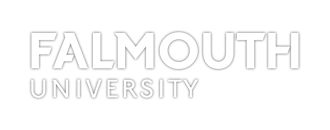Lofty Ambition: Fibre From the Roof of the World
Braddock-Clarke, Sarah  ORCID: https://orcid.org/0000-0003-2794-5138
(2017)
Lofty Ambition: Fibre From the Roof of the World.
Selvedge, January/February 2017 (74).
pp. 74-79.
ISSN -9-771742-254037-74
ORCID: https://orcid.org/0000-0003-2794-5138
(2017)
Lofty Ambition: Fibre From the Roof of the World.
Selvedge, January/February 2017 (74).
pp. 74-79.
ISSN -9-771742-254037-74
Preview |
Text
WILD ENVIRONS FOR SELVEDGE THIRD DRAFT.pdf - Accepted Version Available under License Creative Commons Attribution Non-commercial No Derivatives. Download (136kB) | Preview |
Abstract / Summary
Three international designers using animal fibre from remote areas:
Tengri, Norlha Textiles and Denis Colomb Lifestyle. For centuries human beings have used animal hair/fleece to spin yarn to then make into cloth - the animal continues with its life. Materials to clothe can be found in all sorts of wild terrains from the steppes, sierras, tundras and plateaus of the highest mountains to the arid plains of deserts. The animals in such remote and often fragile conditions have learned to adapt to fluctuating temperatures – in some cases from tropical to sub-polar. A new wave of ethical designers has recently stepped in to the global arena. Tengri is a luxury yet sustainable fashion label that is designed in London and made in UK/USA using Mongolian yak fibre. Norlha Textiles also use the wonderful look, feel and inherent properties of the yak fibre - from the plateaus of Tibet, one of the most remote environments and most fragile ecosystems on our planet - known as the ‘Roof of the World’. French-born and architecture-trained in Milan, Denis Colomb worked on several fashion boutiques in Paris, New York and Tokyo during the 1980s and 1990s. After travelling to far-flung places such as the Far East and Nepal he became intrigued with Mongolian cashmere, reputably the finest in the world and started to work with it in the early 2000s. The consumer of today is ever-aware and in-touch with the manufacturing processes involved in converting a raw material to the end product – from fibre to garment with 100% traceability/transparency in the supply chain. There is rising interest in where clothes are made, their provenance and support for those who lead alternative lifestyles in such described wildernesses.
| Item Type: | Article |
|---|---|
| ISSN: | -9-771742-254037-74 |
| Subjects: | Fashion & Textiles > Fashion Fashion & Textiles > Textiles |
| Courses by Department: | The Fashion & Textiles Institute > Fashion Design |
| Related URLs: | |
| Depositing User: | Sarah Braddock-Clarke |
| Date Deposited: | 17 Oct 2019 14:58 |
| Last Modified: | 11 Nov 2022 16:26 |
| URI: | https://repository.falmouth.ac.uk/id/eprint/3490 |
Actions
 |
View Item (login required) |

 Tools
Tools Tools
Tools